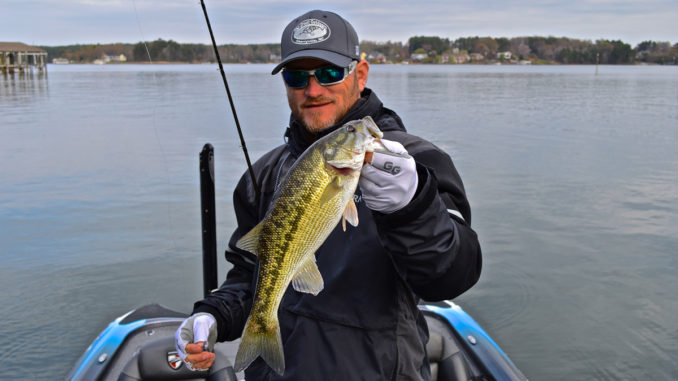
Fisherman can experience great spring fishing long before spring rolls around anywhere else.
I was surprised to be fishing so close to the docks and in such shallow water. It was February; big bass were supposed to be suspended in deep water, barely moving, let alone feeding. But bass pro Hank Cherry of Maiden had other ideas.
Cherry’s bass boat was barely in the water and away from the ramp when he cut the outboard and started casting. He wasn’t even chucking lures toward the open water; he was pitching a football jig into a slim strip of water between the land and a dock. It was tedious work, with a big female bass keeping watch over her bed nearby, uninterested in anything Cherry pitched her way. No male was on the bed for some reason, so it fell to her to keep the eggs safe, motionless in the shadow cast by the ramp and the rising sun.
Suddenly, she had seen one cast too many; she came alive and went after the bait with a burst of speed. It was the first fish of the day, but certainly not the last. February fishing at Lake Norman is like that — unexpected action in unexpected areas.
The lake gets its intense winter activity from the Marshall Steam Station, operated by Duke Energy off NC 150 on the west side of the lake around the mid-lake area. According to its website, Duke Energy can get 2,090 megawatts of electricity out of the station’s four coal-fired, steam-driven power units. That level of production requires millions of gallons of water to create the steam and cool the machinery.
When the water returns after being used in the plant, it reenters Norman at a higher temperature. Environmentalists often frown on the warm water returned to lakes from factories, but in Norman’s case, it creates a fish haven. The warm outflow provides bass a place to rest during the winter and escape the cold-weather stupor that usually turns fishing off when hunting season begins.
Think of it as a man-made tropical hideout. Just as oceanic fish move into the equatorial region during winter and back to polar waters in the summer, so bass in Lake Norman move to the water below Marshall in the winter and fan out during the warmer months.
“The best thing about Lake Norman with the power plant is … once they make their move and go up there, they don’t leave. They may get stubborn and hard to catch, but they don’t leave,” Cherry said.
Bass spawn based on water temperature and not according to the calendar, although the two usually go hand in hand. Outside the steam plant’s outflow, the water is the requisite 55 to 65 degrees, so bass can spawn earlier at Norman than other North Carolina reservoirs that don’t have a warm-water discharge.
“They begin moving to creeks and shallower water beginning in mid-February,” Cherry said. “It’s usually over by the third week in April. Some last until early May, but April’s it. They’ve pretty much made their move.”
Traditional bass fishing says the fish will move into brushy and secluded side creeks to spawn, away from the deeper water and safe from most egg-stealing predators. With so much of the lake’s 520-mile shoreline taken up by development, fish at Norman have resorted to making their beds right under and around the boat docks instead.
“They don’t really have a choice,” Cherry said. “They are conditioned (to use what habitat is available).
“The problem with that on Lake Norman is there are so many boat docks, that’s where a lot of them like to stage. They get up underneath them, and when you get a goofy day when the weather’s kind of weird, they’re hard to catch because they just suspend under the dock until it’s ready for them to continue their progress.”
While not biologically or ecologically ideal, the conditioning bass undergo from Marshall’s warm outflow is great news for fishermen. A bass boat is almost unnecessary — stand on any dock a little downstream from the NC 150 bridge and scout for shining, pebbled bass beds to cast over. Cast lures resembling egg predators across the edges of the beds and retrieve them right past the fish’s nose.
That’s how Cherry did it. His boat was hugging the put-in when he caught the big female out of the shadows. Although it’s his home lake, being an elite pro who spends hundreds of days annually traveling around the country, Cherry doesn’t get to fish Norman as often as he used to. When he hit the water early in 2015, he went straight for the docks near the warm-water outflow to make the most of what time was available.
Cold weather still had most of the boat traffic off the water. Blazing across its surface, with cold spray barely above the freezing point, the trip felt more like skiing down a snow-clad mountain than fishing. He made his way around the lake to numerous docks and likely coves, skipping lures under the man-made objects bass made their beds around.
Cherry had several rods rigged and standing by, with everything from life-size baitfish lures down to small jigheads and wacky-worm rigs. When he found a bass in the cold, clear water, he planted the Power-Poles and cast — and cast, and cast — until he caught the fish. If one lure didn’t work, he laid that rod aside and picked up another, and so and so on, until every option was tried or the fish was brought to the boat.
Cherry said the secret to pushing an individual bass’s buttons is to find the type of lure each particular fish is keen on. Saying that on particular lure works, even in the bathtub-like water near the Marshall Steam Station, isn’t realistic.
“Early February, you’re still catching a lot on the swimbaits, Alabama rigs, jerkbaits, and shallow-running crankbaits,” Cherry said. “Fish start getting off baitfish as you get later into February. They start keying in more on crawfish, staging right outside their spawning areas — brushy piers, drop-offs from 40 feet of water — things like that where, if a cold front comes back in, they can transition right back out very quickly.
“A lot of those fish will go to the beds (in) late February if … they’re running the water plant and the water is in the 60s.”
Like the mansion-loving millionaires along the shoreline, Norman’s swimming residents exude personality.
“They all have different attitudes. They all eat different stuff,” Cherry said.
While bass are regularly found in the warmer water through the winter, night-time is still the right time to try for one. Cherry said prey species like herring and shad move onto the shallow, rocky areas after dark. If anglers will choose their lures accordingly, they can capitalize on the movement.
The water and the fishing stay hot year-round at Lake Norman. The air above turns cold and anglers have to bundle up, but if they’re willing to put in the effort they can score on a monster largemouth in the shadow of the steam.
DESTINATION INFORMATION
HOW TO GET THERE — Lake Norman stretches around 40 miles northward from Cowan’s Ford Dam northwest of Charlotte. The lake has numerous access points, but the warmer waters flowing out of Marshall Steam Station are most easily access from The Pinnacle and McCrary Creek access areas on NC 150 west of Mooresville and I-77 and east of the lake. Midway Marina on the west side of the lake at the NC 150 bridge has a pay ramp.
WHEN TO GO — The warm water concentrates a lot of bass during the winter, so December through early March will find a lot of fish in the waters that are affected by the outflow. When waters around the lake begin to warm during the spring, bass scatter hither and yon.
BEST TECHNIQUES — Look around docks and the shorelines in the first few miles downstream from the NC 150 bridge for early spawners. Beds will appear shiny in the shallow areas if the water and weather conditions cooperate.
FISHING INFO/GUIDES — Bob Curan, Bob’s Fishing Guide Service, 704-402-0770; www.fishnlkn.com; Craig Price, Fish On! Guide Services, 704-996-0946, www.fishlakenorman.com. See also Guides and Charters in Classifieds.
ACCOMMODATIONS — Wingate by Wyndham, Mooresville, 704-664-4900; Sleep Inn & Suites, Mooresville, 704-799-7070.
MAPS — Kingfisher Maps, www.kfmaps.com; Fishing Hot Spots, 800-ALL-MAPS, www.fishinghotspots.com.

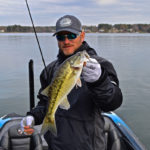
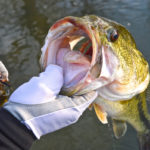
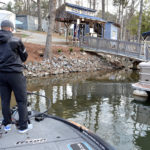

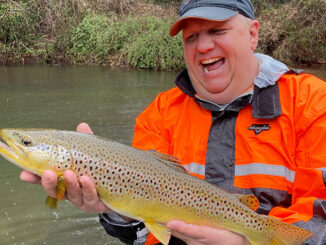

Be the first to comment